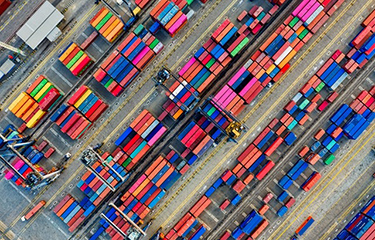An expected rebound in global shipping traffic has stalled, with manufacturers and distributors still struggling to reduce inventories stockpiled during the peak of consumer demand for goods during the Covid-19 pandemic.
Global freight flows have not significantly recovered from the significant freight downturn that began in the middle of 2022, and the nine largest ports in the U.S. each recorded their lowest summer traffic since 2017, according to Reuters.
One bright spot has been Asia, where freight volumes have finally begun to improve after the end of lockdown measures in China in November 2022. Container trade has also gone up in Singapore this summer, with a throughput of 3.43 million 20-foot equivalent units (TEUs) in July, up from 3.29 million in the corresponding period last year. In July 2019, TEUs in Singapore reached 3.24 million.
Despite the muddled trading picture, container shipping spot rates have risen around the globe, with trans-Pacific rates hitting 2023 highs in August. Since late June, spot prices for the Shanghai-Los Angeles route have increased by 43 percent, according to FreightWaves.
However, there is uncertainty about whether increasing prices are due to higher demand or capacity constraints from shipping lines across the U.S.
“Higher rates have not been the primary issue because the rate issue is being overwhelmed by the additional costs imposed on exporters by the carriers’ inability or unwillingness to provide timely and accurate data on things like [earliest return date], when the ship is coming in, and which terminal exporters should send the cargo to,” Agriculture Transportation Coalition Executive Director Peter Friedmann said.
The back-to-school season has caused a recent surge in fill rates for ships bound from China to the U.S., according to shipping logistics and data firm Container xChange. The National Retail Federation predicted the back-to-school shopping season in the U.S. is going to surpass pre-pandemic levels, reaching USD 41 billion (EUR 38.4 billion), up from USD 26 billion (EUR 24.4 billion) in 2019.
“If you look at the U.S., the market looks relatively upbeat," Container xChange CEO and Co-founder Christian Roeloffs said in a release. "U.S. inflation is expected to remain relatively stable at 0.2 percent month-on-month, coupled with a strong labor market. Jobless claims are still at relatively low levels, and retail spending is slightly increasing. All those points towards a soft landing."
U.S. port delays in August reached an average of 5.68 days, showing little disruption and impact from the Panama Canal restrictions, despite past predictions.
Container xChange's Global Port Tracker predicted an uptick in global container traffic in October.
Photo courtesy of Container xChange/Facebook







